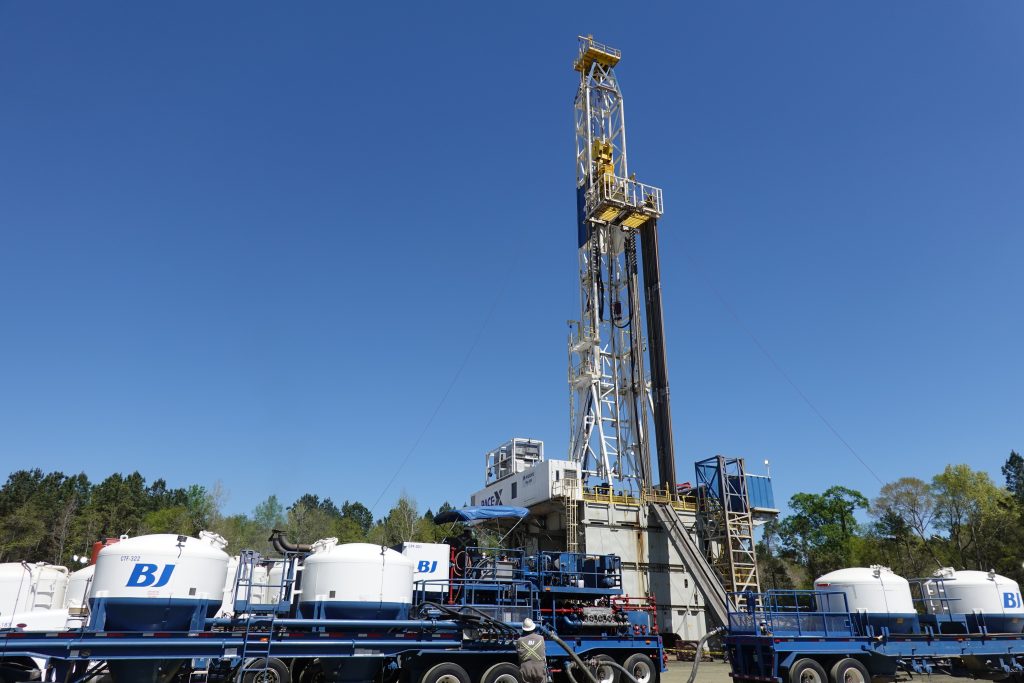
The oil and gas industry continues to adapt, integrating new technologies that improve efficiency and sustainability. One of the most promising innovations is carbon capture and storage (CCS) – a process that reduces carbon dioxide (CO₂) emissions while enhancing oil recovery and maintaining energy security. With increasing efforts to reduce emissions, CCS offers a valuable investment opportunity for qualified investors in oil and gas.
What is Carbon Capture and Storage?
CCS is a technology designed to capture CO₂ emissions from industrial and energy-related sources before they enter the atmosphere. The captured CO₂ is then transported and securely stored underground in geological formations. This process reduces emissions that drive climate change while allowing oil and gas companies to produce energy efficiently.
CCS typically consists of three main steps:
- Capture – CO₂ is separated from other gases released during industrial activities, such as power generation and natural gas processing.
- Transport – The captured CO₂ is moved through ships, pipelines, or trucks to a suitable storage site.
- Storage – CO₂ is pumped into deep underground rock formations, like saline aquifers or exhausted fossil fuel deposits, where it stays trapped permanently.
How CCS Benefits the Oil and Gas Industry
For oil and gas companies, CCS is more than an environmental solution – it is a tool that enhances operational efficiency, regulatory compliance, and economic viability. Some of the key benefits include:
Reducing Carbon Footprint While Continuing Operations
As governments enforce stricter policies to curb greenhouse gas emissions, companies are looking for solutions to stay compliant and sustainable. Carbon capture and storage (CCS) offers a way to significantly cut emissions by trapping CO₂ before it reaches the atmosphere and safely storing it underground. This helps companies comply with regulations and demonstrate their commitment to clean energy. By adopting CCS, oil and gas firms can continue supplying essential energy while minimizing their impact on the environment.
Enhancing Oil Recovery
One of the most profitable applications of CCS is in enhanced oil recovery (EOR). In this process, captured CO₂ is pumped into older oil fields to boost pressure and help extract more oil from the reservoir. This extends the life of oil fields and boosts production without the need for new exploration. Used for decades, EOR now integrates CCS for a more sustainable approach.
Financial Incentives and Investment Opportunities
Governments and international organizations are providing financial incentives to support the adoption of CCS. In the United States, the 45Q tax credit offers incentives for carbon capture, with updated rates established by the Inflation Reduction Act of 2022. For detailed and accurate figures, refer to the IRS guidance on carbon oxide sequestration. These incentives help reduce the cost of CCS projects and improve their attractiveness to investors.
The global CCS market is expected to grow as more projects move from planning to execution. According to the International Energy Agency (IEA), if all announced CO₂ capture projects are realized, global capacity could significantly expand by 2030, supporting emission reduction targets. While the total number of projects varies, increasing investment in CCS signals strong market potential for those looking at long-term energy strategies.
CCS as a Risk Management Strategy
CCS isn’t just about profitability – it also helps companies manage regulatory risks. With stricter emissions rules, industries that don’t adapt could face fines or restrictions. Investing in CCS keeps oil and gas firms ahead of policy changes, ensuring long-term operational stability.
Furthermore, CCS helps protect the value of oil and gas assets by lowering carbon intensity. This allows companies to maintain access to capital and financing tied to sustainability. As investors favor low-emission energy firms, adopting CCS strengthens a company’s position in the market.
What’s Next for CCS in Oil and Gas?
The future of CCS in the oil and gas industry looks promising. Ongoing advancements in capture technology, increasing government support, and rising investor interest are driving CCS adoption. New infrastructure developments, such as dedicated CO₂ storage hubs, will further streamline the process, making it more cost-effective and widely accessible.
The Growing Role of CCS in Oil and Gas
Carbon capture and storage is not just a compliance measure – it is an opportunity for the oil and gas industry to innovate, reduce emissions, and maximize returns. For qualified investors, CCS represents a smart, forward-looking strategy that aligns with both financial and environmental goals.
To learn more about investment opportunities in the oil and gas sector, visit DW Energy’s site.
Sources:
“What is carbon capture and storage?” National Grid, https://www.nationalgrid.com/stories/energy-explained/what-is-ccs-how-does-it-work
“Understanding carbon capture and storage,” British Geological Survey, https://www.bgs.ac.uk/discovering-geology/climate-change/carbon-capture-and-storage/
“What is Carbon Capture and Storage and How Does it Work?” Global CCS Institute, https://www.globalccsinstitute.com/resources/ccs-101-the-basics/
“A Roadmap to At-Scale Deployment of Carbon Capture, Use, and Storage,” U.S. Department of Energy, https://www.energy.gov/sites/default/files/2022-10/CCUS-Chap_8-030521.pdf
“Instructions for Form 8933,” Internal Revenue Service, https://www.irs.gov/instructions/i8933
“Carbon Capture, Utilisation and Storage,” International Energy Agency, https://www.iea.org/energy-system/carbon-capture-utilisation-and-storage
“U.S. DoE invests $444M in CO2 storage infrastructure,” Carbon Capture Journal, https://www.carboncapturejournal.com/news/us-doe-invests-444m-in-co2-storage-infrastructure/5870.aspx
